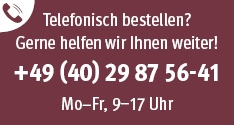Abstracts
Rapp, Irene: Ein Kinderwagen schreit – Uminterpretationen zwischen Semantik und Pragmatik.
In this paper, I argue that metonymy, metaphor and personification have to be described as reinterpretation operations that are used if the standard interpretation of a predicate-argument structure either violates semantic restrictions or is contextually implausible. These processes differ with respect to their focuss on three different concepts. For metonymy, the interpretation conflict is resolved by introducing a second argument, namely a definite individual standing in a real world relation to the original argument. Metaphoric reinterpretation adds a second predicate that has a broader meaning than the original predicate and thus avoids the conflict. Personification introduces a second world, more precisely a fictional text world, where the original conflict does not occur. The three processes have in common that, firstly, they are non-destructive, i.e. they do not change the given lexical items, but add a specific component to enable a suitable interpretation, and, secondly, they can apply freely whenever a semantic or contextual mismatch occurs, i.e. they need not to be licensed by specific lexical items.
Ullrich, Anna Valentine, Jakobs, Eva-Maria: Zeichnen in mündlichen Arbeitssituationen.
This paper deals with multimodal interaction, in particular the use of drawings in process modelling. The analyses presented are based on a case study: in a company, industrial process modelers question employees about workflows, then develop a preliminary process model of the production process and afterwards a computer-generated final process model. In these situations, the participants combine complex resources such as speaking, writing, and drawing. The records that arise contain written and drawn parts (graphic-symbolic elements). When and how do process modelers visualize? What are the functions of records? What role do recordings play in the multimodal interplay of communicative resources?
Loos, Cornelia: Quite a mouthful: sources of iconicity in speech act verbs of NGT and ASL.
The paper offers the first systematic investigation of iconic form-meaning mappings in the domain of speech act verbs in Sign Language of the Netherlands (NGT) and American Sign Language (ASL). It addresses the question of how pervasive the representation of linguistic action as oral speech is in sign languages. Using dictionary data coupled with consultant work, I show that oral speech forms the single most productive source of iconicity in NGT speech act verbs. This contrasts with ASL, which also draws on oral speech to encode linguistic action but to a significantly lesser degree than NGT. Depictions of oral speech may be metonymic, using mouth/jaw or tongue movement, or they may represent spoken language metaphorically via instantiations of the conduit metaphor and its sub-metaphor THE MOUTH IS A CONTAINER (FOR UTTERANCES). The second frequent motivation for iconic speech act verbs are hand movements or co-speech gestures that accompany a linguistic act. I further show that the source of iconicity correlates with how strongly a given SAV is associated with language use. Lastly, I provide a historical framework against which to interpret the frequent representation of linguistic action in terms of oral speech. I propose that different strategies for lexical borrowing coupled with a societal bias against spoken English in the American Deaf community may have discouraged the encoding of speech act verbs via oral speech in ASL.
Rothstein, Björn, Beißwenger, Michael, Gailberger, Steffen, Morek, Miriam: Sprachlich-literarisches Lernen und Deutschdidaktik: Neue Open-Access-Formate für die Deutschdidaktik.
We discuss Networking, Peer-Review, Internationalization and Interdisciplinarity as relevant structures, requirements and needs that publications face in the field of German didactics. We therefore establish a new Open Access platform for German didactics.
Müller, Horst M.: Rezension
Andreas Trotzke (2017): Sprachevolution – Eine Einführung. Berlin: de Gruyter.












